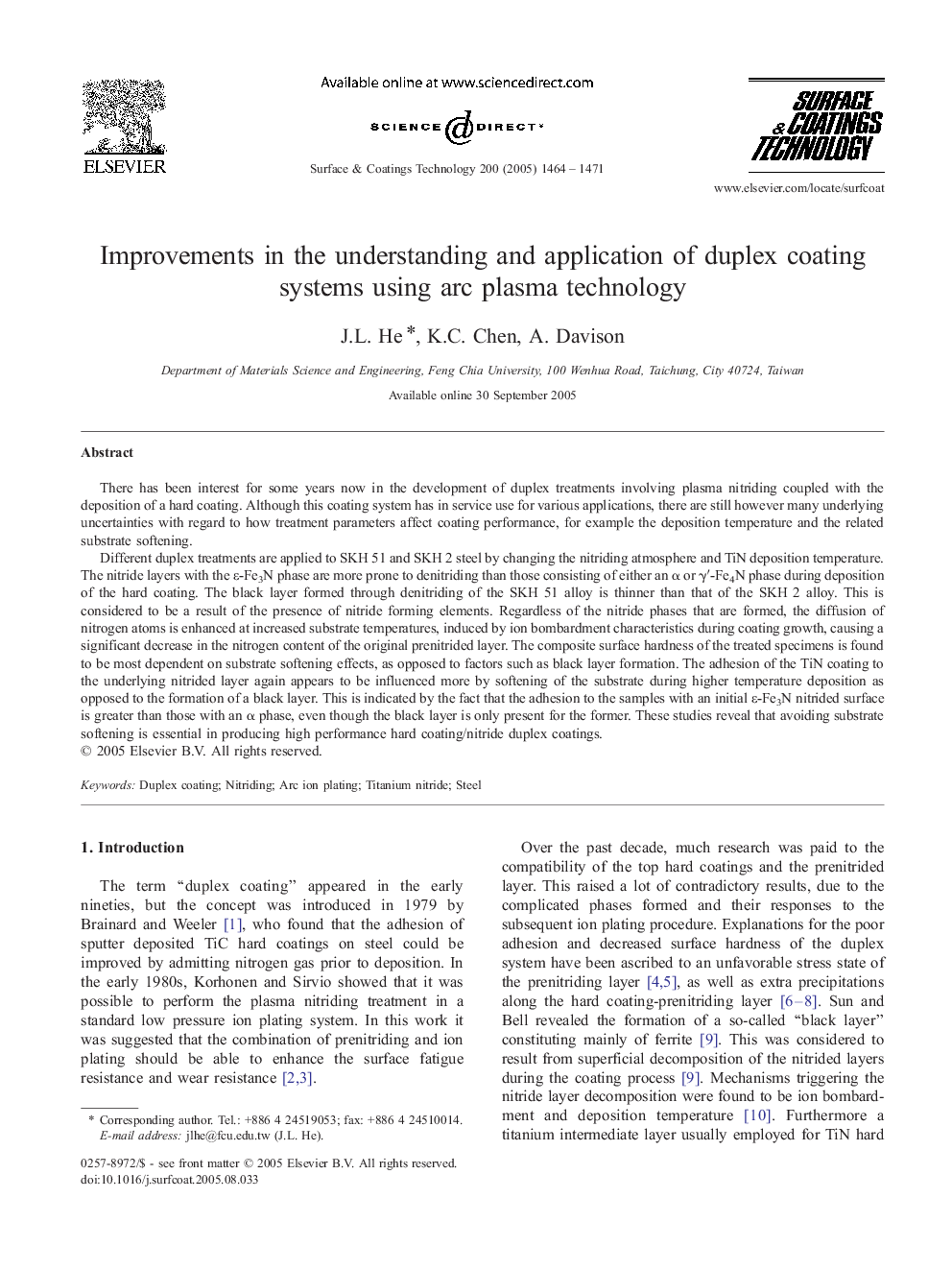| Article ID | Journal | Published Year | Pages | File Type |
|---|---|---|---|---|
| 1663650 | Surface and Coatings Technology | 2005 | 8 Pages |
Abstract
Different duplex treatments are applied to SKH 51 and SKH 2 steel by changing the nitriding atmosphere and TiN deposition temperature. The nitride layers with the ε-Fe3N phase are more prone to denitriding than those consisting of either an α or γâ²-Fe4N phase during deposition of the hard coating. The black layer formed through denitriding of the SKH 51 alloy is thinner than that of the SKH 2 alloy. This is considered to be a result of the presence of nitride forming elements. Regardless of the nitride phases that are formed, the diffusion of nitrogen atoms is enhanced at increased substrate temperatures, induced by ion bombardment characteristics during coating growth, causing a significant decrease in the nitrogen content of the original prenitrided layer. The composite surface hardness of the treated specimens is found to be most dependent on substrate softening effects, as opposed to factors such as black layer formation. The adhesion of the TiN coating to the underlying nitrided layer again appears to be influenced more by softening of the substrate during higher temperature deposition as opposed to the formation of a black layer. This is indicated by the fact that the adhesion to the samples with an initial ε-Fe3N nitrided surface is greater than those with an α phase, even though the black layer is only present for the former. These studies reveal that avoiding substrate softening is essential in producing high performance hard coating/nitride duplex coatings.
Related Topics
Physical Sciences and Engineering
Materials Science
Nanotechnology
Authors
J.L. He, K.C. Chen, A. Davison,
